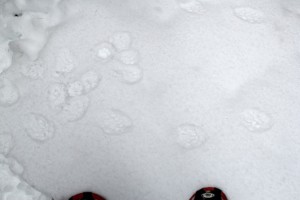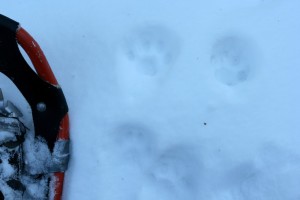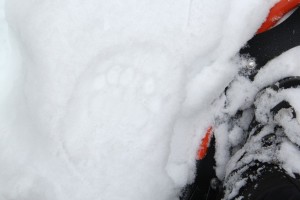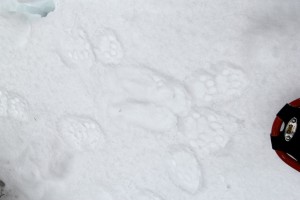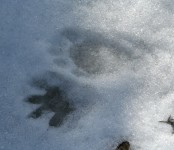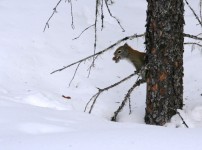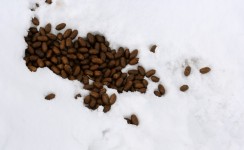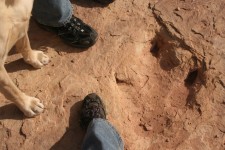Snowshoeing near McArthur Lake, I crossed the usual coyote, snowshoe hare and small rodent tracks in the fresh snow. Then as I slowed to navigate around a fallen tree I noticed a different track.
With only an inch or so of new snow on top of a crust, the tracks were crisp. I could see where the fur around the paws touched the snow.
Larger than a coyote track, I knew the animal had to be a cat because the tracks were round compared to oval canine tracks. I had seen cougar tracks before and these were smaller which narrowed the mystery animal to either a bobcat or lynx.
Since I was at a low elevation, I guessed the animal was a bobcat. Lynx favor deep snow and tend to have larger tracks since their feet act like snowshoes. Bobcats tend to stay at low elevations when their ranges overlap with lynx, which they do in North Idaho.
Upon returning home, I confirmed my guess because bobcat tracks are approximately two inches long and up to 2.5 inches wide. Whereas, lynx tracks are just over four inches long and five to six inches wide–a sizable difference.
I’ve never been lucky enough to see a bobcat but seeing the tracks was a thrill. I looked around and followed the tracks for awhile since they were fresh. Of course the bobcat’s brownish fur with dark streaks and spots helps camouflage it amongst the vegetation.
I looked high and low since bobcats can climb trees. But with my labrador retriever with me, I figured the bobcat wouldn’t stick around. I also didn’t know that bobcats are mainly crepuscular, meaning they are active at dawn and dusk.
Bobcats may be active during the day or night when there is little human presence but they are mainly active when their prey (primarily snowshoe hares) is active.
When hunting, bobcats stealthily weave through vegetation staying concealed which I noticed as the tracks weaved on and off the trail into the vegetation.
If they are able to sneak up on prey, they will capture it by pouncing–sometimes up to 10 feet in one leap. In areas with high snowshoe hare activity, bobcats follow the well-worn hare runs and then sit sphinx-like waiting for hares to appear.
Within the maze of tracks, I found where the bobcat had sat on the trail–most likely looking for prey. Bobcats don’t have a keen nose so they depend on their sharp eyesight and stealth to locate and stalk prey.
Interestingly, I didn’t see any snowshoe hare tracks in the area of the bobcat tracks. A few hundred yards down the trail the snowshoe hare tracks and rodent tracks began to appear.
Without snowshoe hares in the area of the tracks, the bobcat must have moved on to a more promising location. During winter their territories are four times larger than in the summer because they need more area to hunt.
Or I didn’t see the bobcat because it was resting in a hidden rock crevice, hollow tree, under a log or beneath a root wad or blow-down.
Between being well-camouflaged and crepuscular, bobcats are seldom seen so I’m thrilled I saw tracks. Hopefully some day I will be lucky enough to catch a glimpse of the elusive bobcat.

